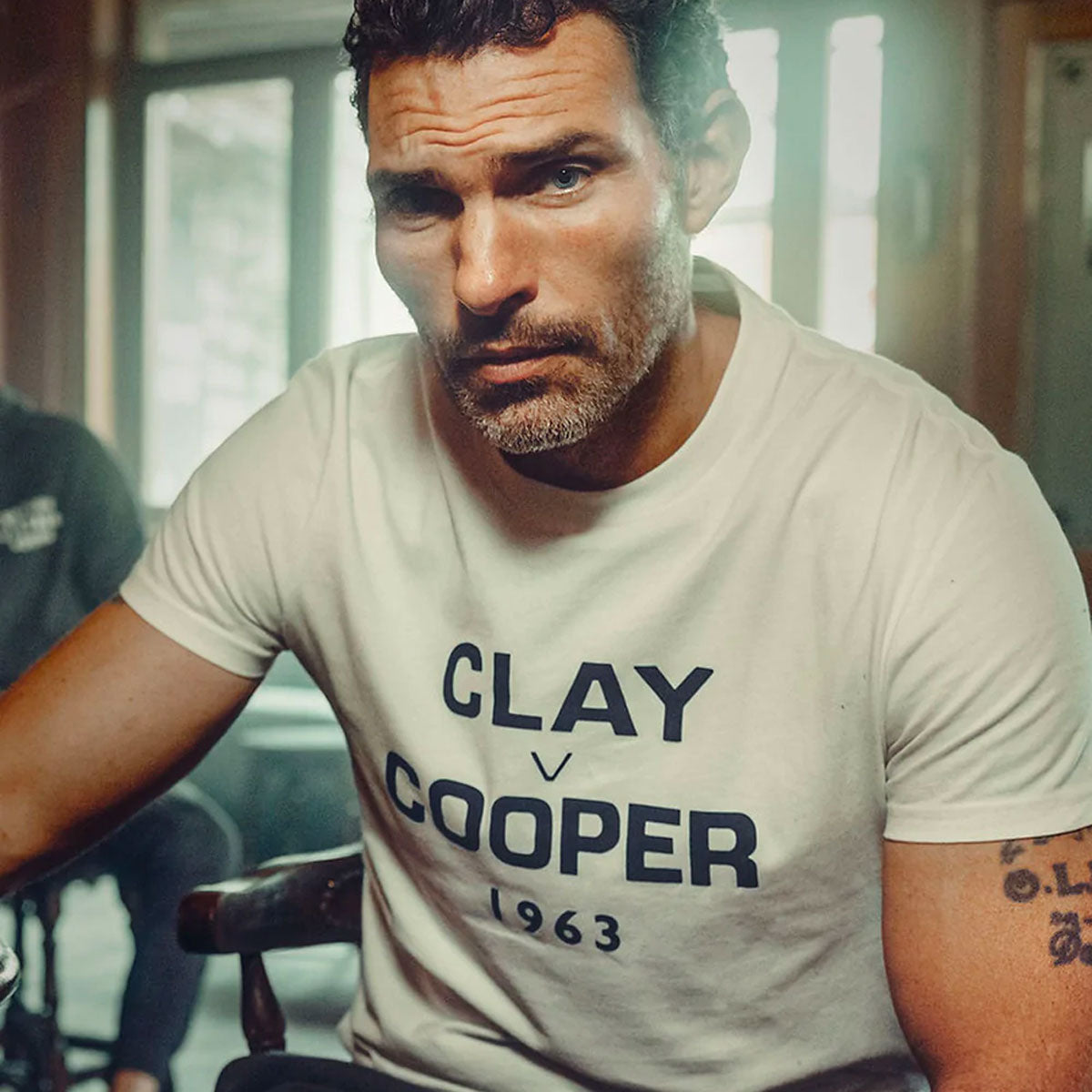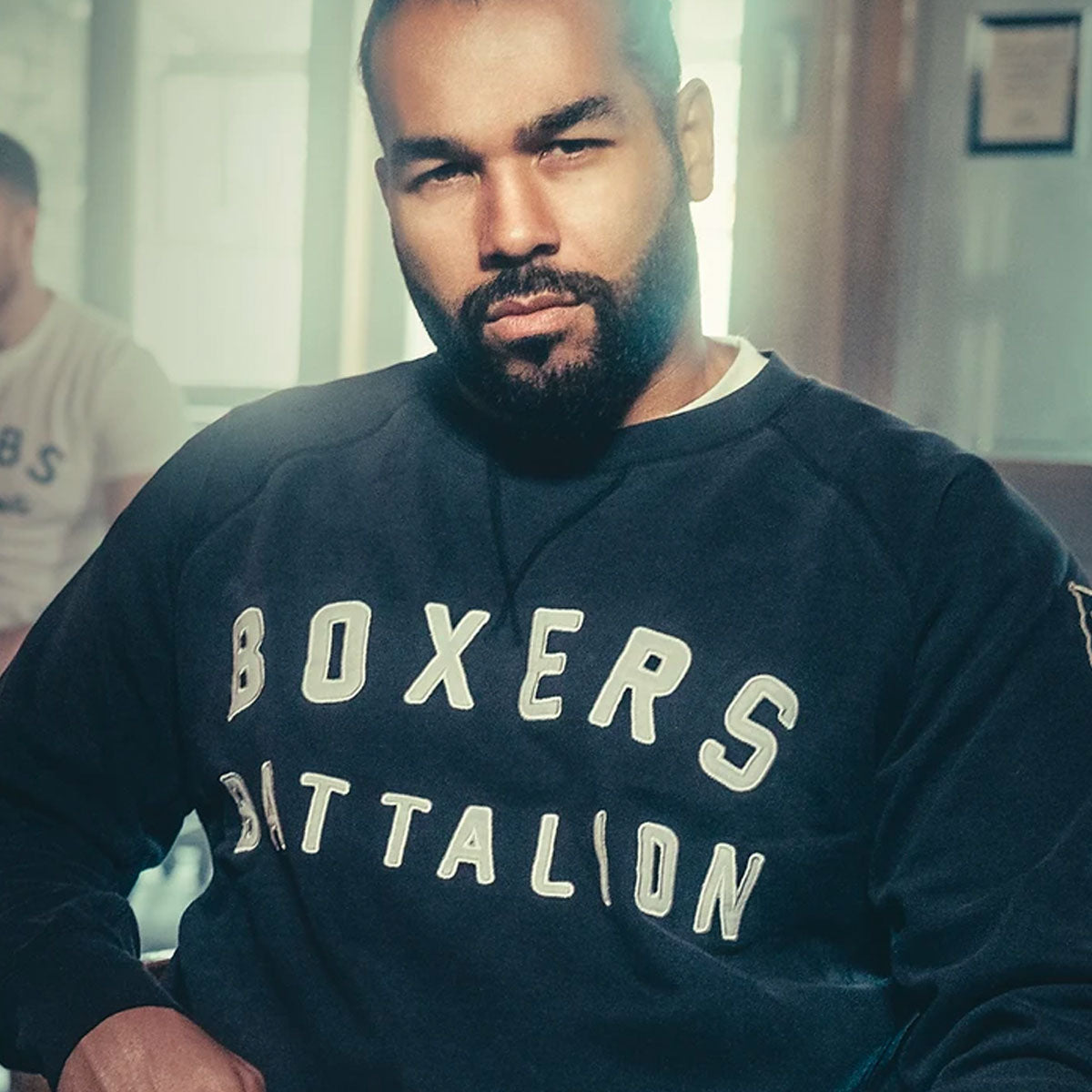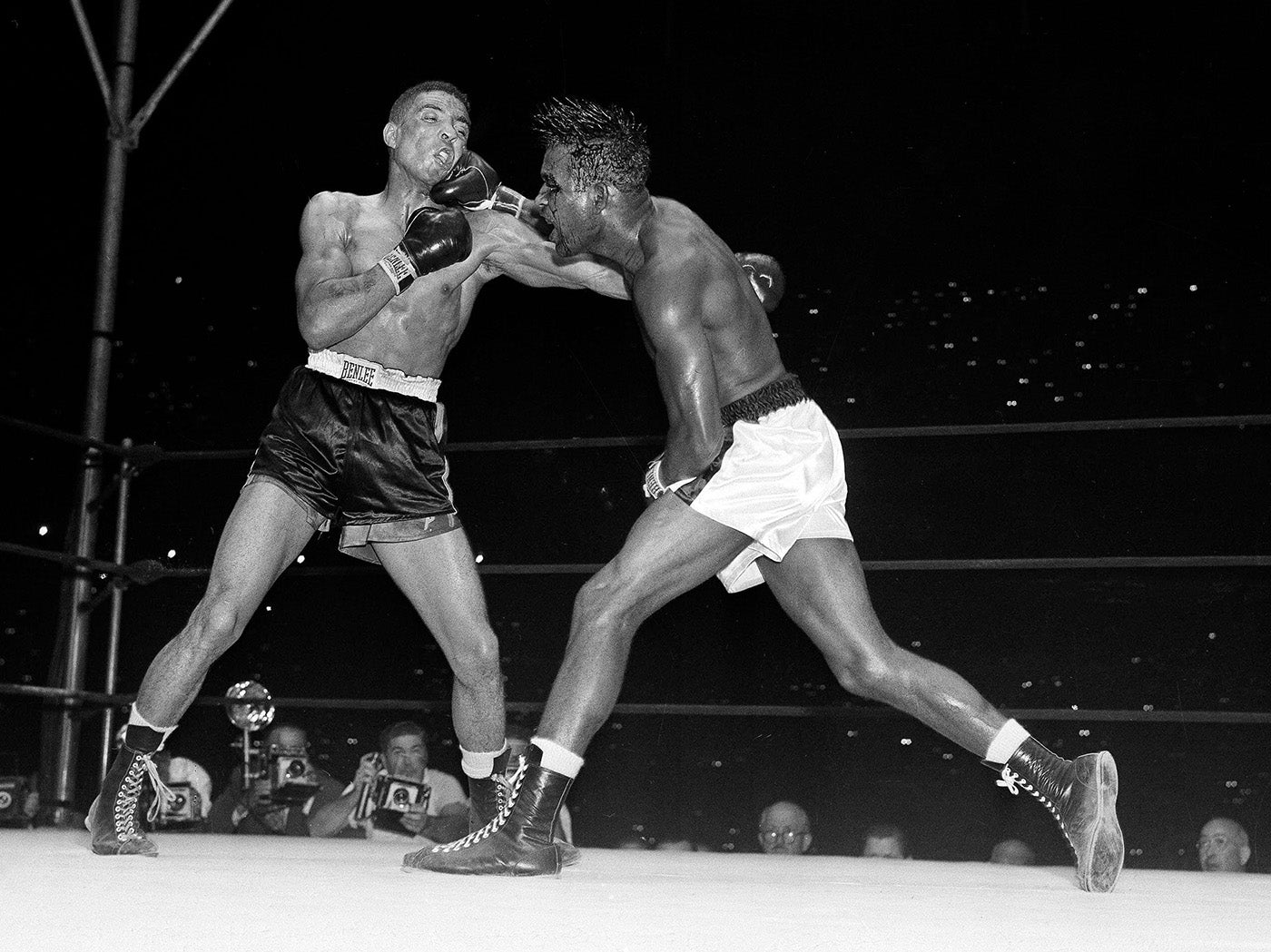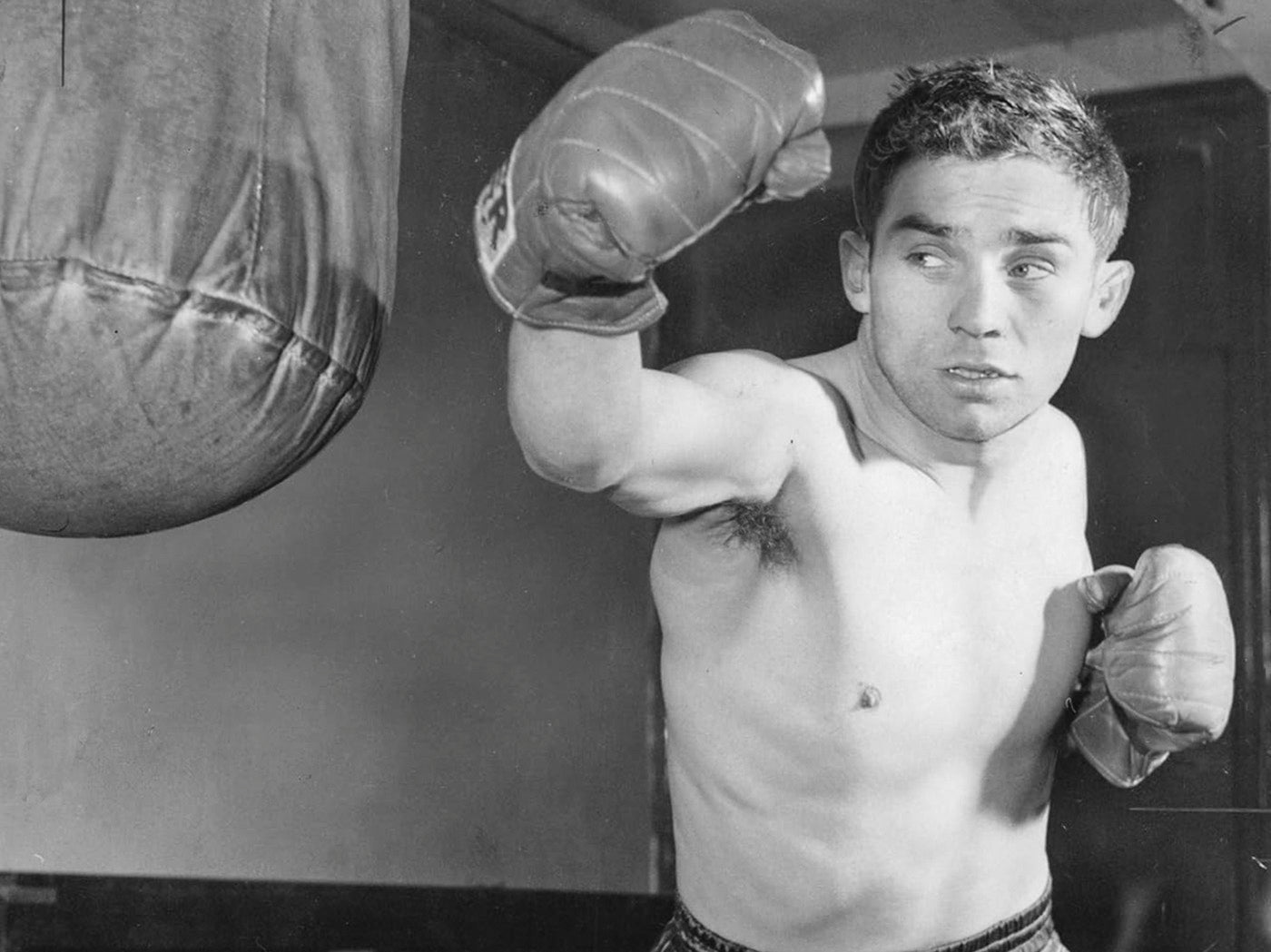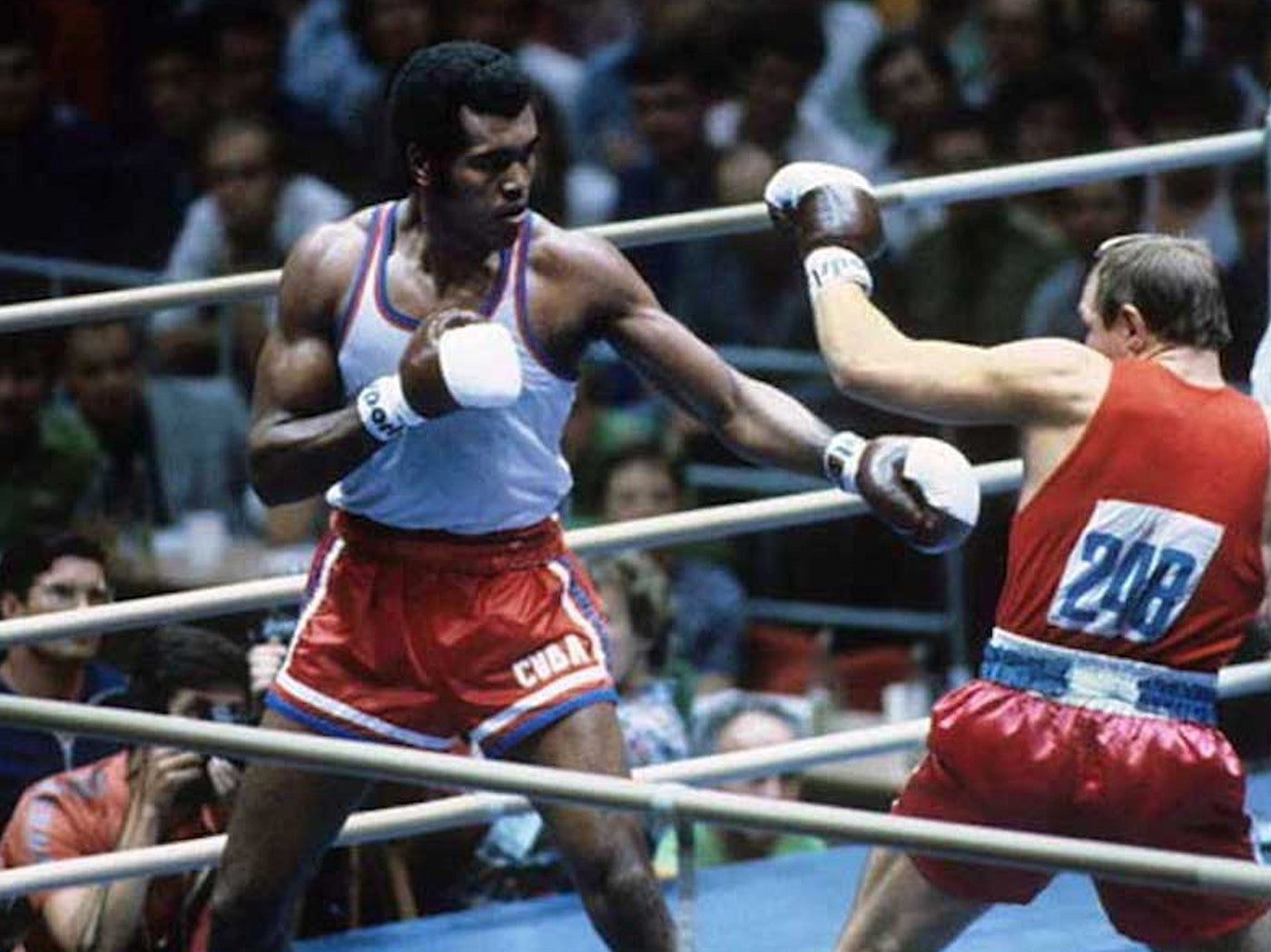‘To be a champ you have to believe in yourself when no one else will.’ Sugar Ray Robinson

Walker Smith Jr. Sound familiar? Probably not. The metamorphosis to ‘Sugar Ray Robinson’ took some time to come to fruition, but when it did, it changed the landscape of boxing folklore forever.
Born on 3 May 1921, in Ailey, Georgia to Leila Hurst and Walter Smith Sr, Robinson was one of three siblings and the only son. His father picked peanuts and cotton, and also farmed corn, whilst juggling any other work he could, including construction.
As an 11-year-old kid, Robinson’s family moved to Detroit, where he become friends with a 17-year-old, by the name of Joe Louis. They became good friends and Robinson even used to carry Joe’s bag to and from the boxing gym, in awe of the future world heavyweight champion. Unfortunately, Robinson’s parents split when he was 12 and he was relocated with his mum to Harlem, New York.
Despite having early aspirations of becoming a doctor, Robinson laced up the gloves at 13 and his trajectory changed. He started boxing in a police athletic league, weighing a modest 85lbs, but was intent on entering his first major boxing competition as soon as possible. Unfortunately, Robinson hit a brick wall once he was told he was too young to attain an AAU (Athletic Amateur Union) card and would have to wait until he was 16.
Not one to quit, Robinson managed to get his hands on the card of a certain Ray Robinson, who had quit boxing and was 16 years old. That became his fighting name for the rest of his fistic career. The ‘Sugar’ was added shortly after a lady at one of his amateur contests in New York commented that he was, ‘Sweet as Sugar,’ to watch. That was the official birth of Sugar Ray Robinson.
For the next four years he racked up a very impressive 85-0 record as an amateur boxer, with 69 knockouts and 40 first round stoppages. However, it’s worth looking at the substance of the 85-0 instead of the mere statistic.
In 1938 he won the bantamweight New York Metropolitan AAU Open Championship, then in 1939 he won the New York Golden Gloves Tournament of Champions, the Intercity Golden Gloves Tournament and the New York Daily News Golden Gloves Tournament, all at featherweight. The following year, in 1940, he won the New York Golden Gloves Tournament of Champions, the Intercity Golden Gloves Tournament and the New York Daily News Golden Gloves Tournament, all at lightweight. In between juggling his boxing exploits, Robinson also got married at 16, had a child, Ronnie and was divorced by 19.
After a decorated amateur career, at the age of 19, Robinson had his pro debut on 4 October 1940 against Puerto Rican born, Joe Echevarria, at the mecca of boxing, Madison Square Garden. He was fighting on the undercard of one of his idols, Henry Armstrong, who lost on points to Fritzie Zivic. Robinson on the other hand, weighing a touch below the 135lbs lightweight limit, stopped Echevarria in the first minute of the second round and earned $150 for his troubles. Incidentally, Robinson would fight Zivic in back to back fights a year later, winning on both occasions.
Before the end of 1940, Robinson fought a further four times, in some of America’s biggest venues, gaining attention wherever he went, as an all action, slick, technical fighter who had no qualms in going toe to toe. In his last fight of the year against Oliver White, who had a record of 35-9-6 at the time, Robinson was floored in the second round, but then repaid the favour in triplicate in the next round, to finish the contest in the third session.
Only four as a pro and Robinson was already 10-0. Next up was Bobby McIntire, who he beat on points at Madison Square Garden, in a fight he claimed was the toughest of his early professional career. Ring Magazine wrote of the 19-year-old. ‘Ray Robinson, classy Harlem lightweight, and Bobby McIntire, staged the best scrap of the night in their six-round bout which went to Robinson.’
In just under two years, Robinson had already racked up an impressive resume of 35-0 and on 2 October 1942 at Madison Square Garden, was pitted against The Bronx Bull, Jake LaMotta, who possessed a rather weaker CV in comparison, of 25 wins, four losses and two draws. Even though Robinson weighed a mere 145lbs compared to LaMotta’s 158lbs, he beat the New Yorker comfortably on points. Despite the result, the pair’s style made for incredibly entertaining viewing, eventually leading to them locking horns six times in total.
Four months later, on 5 February 1943, the pair met once again, but this time at the Olympia Stadium, Detroit. On this occasion, LaMotta won a comfortable points decision on all three scorecards, adding one loss to Robinson’s previously unblemished 40-0 record. Robinson said after the fight, referring to the eighth round, ‘LaMotta did something nobody had ever done to me before. He hit me with a right hand in my mid-section and when I doubled up, he let go with a left hook to the jaw. For the first time in my career I had no legs. I sagged through the ropes and onto the ring apron and sprawled there.’ (LA Times).
Incredibly, the pair met again only 21 days later, at the same venue, but get this - Robinson had a 10 round fight in between against a very capable fighter in California Jackie Wilson, defeating the West coast fighter over 10 rounds on points. One week after the Wilson fight, Robinson defeated LaMotta on points, bringing the tally to 2-1 in Robinson’s favour.
Amongst all the battles Robinson was partaking in the ring, there was an almighty one outside it going on, known as World War Two. The day after the third LaMotta fight, Robinson was inducted into the US Army under his birthname of Walter Smith Jr, for the next 15 months.
Serving alongside the legendary reigning world heavyweight champion, Joe Louis, the pair went on tour with the entertainment arm of the military, better known as ‘the Special Services division,’ putting on exhibition bouts. Robinson did find himself in hot water on many occasions whilst serving, mainly due to not confirming to their ideals and standards, one being his refusal to participate in exhibitions where African Americans were refused entry to watch.
Louis and Robinson’s friendship became reinforced during their time in the Army and post World War, they unsuccessfully attempted to go into business, distributing liquor in New York state. Sadly, due to the colour of their skin, they were refused a license. Even worse, the pair would be recognised as two of the best boxers in eternal history, but both would live their later years without a cent between them.
 SRR defeats Reuben Shank by TKO in the 2nd round, August 1942
SRR defeats Reuben Shank by TKO in the 2nd round, August 1942
Back to the boxing. Despite his military commitments, Robinson still had three professional bouts, with the third being against nonother than, former long reigning, two-time world champion, Henry ‘Homicide Hank’ Armstrong at Madison Square Garden. By now, Ray had grown nicely into a 147lbs frame, whereas Armstrong, a 157 fight veteran, stood almost five inches shorter, was a natural 140lbs fighter, who’s best years had passed him and was only fighting for money. The fight by all counts was entertaining, however, on 27 August 1943, 22-year-old Robinson ruled the scorecards comfortably over 10 rounds, sadly beating his childhood hero and admitting at a later date that he carried the champion to preserve his dignity. Robinson said in his autobiography, ‘As much as I didn’t want to fight Henry, if I didn’t fight him, I’d be costing him money. I had to fight him for his good.’
From 1943 to 1951, Robinson clocked up a remarkable 91 fight unbeaten streak. In 1945, the Georgian native boxed nine times, but it was the substance of those contests which added to his momentum as possibly the best boxer to watch in the square ring. On 14 February 1945, Robinson fought George Costner at Chicago Stadium in front of 20,193 spectators, which was apparently the largest indoor boxing attendance for a professional contest, since Jack Dempsey had put on an exhibition with King Levinsky. Despite being knocked down by a sharp right to the chin in the opening minute, Robinson got up from the canvas and delivered a crunching left hook which kept Costner on the canvas for the 10 count. Job done, in a little over two minutes.
Nine days later he beat Jake LaMotta by a wide margin at Madison Square Garden, then seven months later, on 26 September 1945, they met for the fifth time. On this occasion, at Comiskey Park, Chicago, Robinson dominated, the first half of the fight with his technical prowess and footwork, whereas LaMotta came on like a steam train for the latter half, suffocating Robinson. The 12 round contest was declared a SD points victory for Robinson, albeit, many believed LaMotta had done enough to walk away with the victory. Robinson admitted this contest was unequivocally the toughest he’d had with the Bronx Bull.
 SRR with his secretary
SRR with his secretary
On 20 December 1946, at Madison Square Garden, Robinson, now 73-1-1, was finally granted a chance to fight for a world title, which in all honesty should have happened several years before. The only reason for the delay was Robinson’s gutsy move to go against the mafia’s ‘requests,’ who unfortunately owned the boxing scene. Now pitted against fellow Georgian native, Tommy Bell, the pair battled it out over 15 rounds for the vacant world welterweight title. As opposed to Robinson’s routine of commanding the early part of the fight with LaMotta, Bell took control of the first third, including knocking Robinson down with a sharp left hook. The last two thirds were Robinson’s. Bell took a great deal of punishment and was dropped in the eleventh for a long count and was almost dispatched in the following stanza. Despite a gutsy attempt to claw back the latter rounds, Robinson was declared the winner and new world welterweight champion in front of the 15,670 strong crowd in attendance.
Over the next two and a half years, Robinson extended his record to 95-1-2, which included defences against Chuck Taylor and Jimmy Doyle, with the latter having a very dark ending. Robinson had actually pulled out of the fight after having a dream that he killed Doyle in the fight, but somehow, after being convinced by a priest to participate, Robinson knocked out Doyle on 24 June 1947 in the eighth round. He consequently died from injuries sustained in the ring, which had a profound effect on Robinson for life. He donated the majority of his purses from his next two fights to Doyle’s mother.
 SRR training 1949
SRR training 1949
Having already beaten Kid Galivan in 1948 by a wide points margin, in a non-sanctioned contest, the pair met again on 11 July 1949 at the Municipal Stadium, Philadelphia, but this time Robinson put his world welterweight title on the line. With just a touch under 28,000 in attendance, the pair put on a great fight for the onlookers, with the fearless Cuban constantly testing Robinson’s mettle, which included cutting Sugar in the early rounds. Thankfully, one of Robinson’s strongest assets was his ability to compute information quickly and change his gameplan accordingly to the opponent and circumstances. As a result, Robinson stormed down the home straight clinching a clear cut points victory.
Struggling to make 147lbs, in his next dozen fights, Robinson campaigned between 150lbs – 156lbs, which included winning a fight against Robert Villemain, for a trinket known as the Pennsylvania State World Middleweight title. Despite one last successful defence of his welterweight crown at 147lbs on 9 August 1950, against Charley Fusari, Robinson’s future was at middleweight now.
On 14 February 1951, Robinson challenged the reigning world middleweight champion at Chicago Stadium and was now boasting an astonishing 124 fight record, with only one loss. Remember who that one loss was against? That’s right, Jake LaMotta. So, it was very fitting that the world champion looking to defend his title was non-other than the very same man, Mr LaMotta.
 SRR defeats Jake LaMotta for the middleweight title 1951
SRR defeats Jake LaMotta for the middleweight title 1951
The fight was immortalised in history as ‘The St Valentine’s Day Massacre,’ as Robinson handed out a 13 round beating, stopping his old foe by way of technical knockout. LaMotta said at a later date that Robinson was, ‘The greatest fighter, pound for pound who ever lived.’
Having won his previous five fights in Europe, defeating opponents from France, Belgium and Switzerland, Robinson returned to fight seven out of his next 10 fights in Europe, one of which occurred in Britain on 12 September 1951 at Earls Court Arena, Kensington. His opponent was the Leamington Licker, Randolph Turpin.
Turpin put on the performance of his life on home soil, cutting Robinson in the seventh round and winning the contest by a firm points decision, to become the new world middleweight champion. Turpin had handed Robinson his second loss in 133 fights and the former champ was not intent on sitting around and licking his wounds.
On a side note - Robinson certainly made an impression on the European community, as he brought his pink Cadillac over with him on the boat from America, and would often seen cruising around with a portion of his entourage inside. However, for now, it was back to the USA.
On 12 September 1951, Turpin travelled to Robinson’s backyard at the Polo Grounds, New York. The fight was close on the scorecards going into the tenth, when Turpin managed to open a cut over Robinson’s eye. This time, Robinson didn’t dwell on the injury, instead he floored the Brit twice and sealed the victory before the end of the round. Whilst Turpin went on a steep decline both professionally and personally, Robinson’s legacy was far from finished.

SRR reclaims his middleweight title defeating Turpin in September 1951
Robinson certainly left an impressive footprint in 1952. He defended his world title against tough Hawaiian, Bobo Olsen on 13 March by successful points decision, then five weeks later knocked out Rocky Graziano in the third round at Chicago Stadium. A mere two months after, Robinson stepped up to face Joey Maxim for the light heavyweight world title. In addition to only weighing 157 ½ lbs (2 ½ lbs below the middleweight limit) versus Maxim’s 173lbs, both fighters were contending with 104 degrees of heat. The intensity of the heat was so excessive that referee, Ruby Goldstein had to be replaced in the tenth round by Ray Miller and Robinson retired on his stool at the end of the thirteenth, due to heat exhaustion.
 SRR vs Rocky Graziano, April 1952
SRR vs Rocky Graziano, April 1952
After 136 fights, with only two losses and two draws, Robinson announced his retirement in December 1952, at the age of 31. Robinson made some investments into businesses which turned rotten and despite having occasional work as a dancer and the odd television appearance, his income fell through the floor. Consequently, after a two-and-a-half-year layoff, Robinson returned to the square ring.
Robinson’s comeback fight was against Joe Rindone, which he won via sixth round knockout. However, he did lose his next fight two weeks later against journeyman, Ralph Jones by a wide points decision, which made the boxing press think, ‘Maybe he doesn’t have it anymore?’ The answer to the question is, ‘Yes. He certainly did.’
In the next six months, Robinson won four on the bounce, which propelled him into a world title fight against old foe, Bobo Olson. Having gone the full 15 rounds with Olson last time, everyone was expecting a similar scene this time, using his skills to dance around the heavier footed Hawaiian. Robinson had other plans, knocking Olson out in two rounds on 9 December 1955 to regain his world middleweight crown, then repeated the task six months later, stopping Olson in four to retain his title.
1957 and 1958 were rollercoaster years. Robinson fought Gene Fullmer on 2 January 1957, losing a unanimous decision for the National Boxing Association World Boxing title, then four months later had the rematch and knocked him out in the fifth. This was Fullmer’s first and only ever KO loss as a pro.
Next up was The Upstate Onion Farmer, Carmen Basilio at Yankee Stadium, The Bronx on 23 September 1957. Robinson lost his title by split decision after 15 hard fought rounds and by doing so, lost his world middleweight title. Then, six months later on 25 March 1958, Robinson flipped the script and took back his world title, also by split decision. Both Basilio fights were successive Ring Magazine Fights of the Year for 1957 & 1958.
 SRR vs Carmen Basilio, September 1957
SRR vs Carmen Basilio, September 1957
Robinson went through a bit of as tough patch in his next six fights, winning two, drawing one against Gene Fullmer and losing three, which were all world middleweight title fights – two against Paul Pender and one against Gene Fullmer.
It would be very fair to say, as Robinson entered his 39th year, that his best years were now behind him, however, with bills to pay, he fought a further 46 times in the next four years, travelling all over America, Europe, plus Jamaica and Mexico. Notable losses include Britain’s Terry Downes and future Hall of Famer, Joey Giardiello.
 SRR in camp for Terry Downes 1962
SRR in camp for Terry Downes 1962
Robinson never challenged for a world title again and retired at the age of 44 after 201 professional contests, which included 174 victories, 19 losses, six draws and 109 knockouts…..not to mention he boxed over 1,400 rounds. He held the world welterweight title from 1946 – 1951 and went on to become a five-time middleweight champion. That’s some CV.
As flamboyant as Robinson was in the ring, this persona was also evident outside, which reflected in his bank balance. His earnings of over $4 million dollars as a prizefighter were completely gone at the time of retirement, to the point where he was awarded a massive trophy in honour of his contribution to boxing, however, he didn’t posses a piece of furniture to put it on at his meagre New York apartment.
After his teenage divorce, he remarried in 1944 to Edna Mae Holly, an American dancer. They had one son, Ray Robinson Jr and divorced in 1962. His final wife was Millie Wiggins Bruce, whom he married in 1965 and remained with until his dying days.
Despite trying his luck within the world of entertainment, the returns and his lifestyle never allowed for his bank balance to recover. His restaurant, Sugar Ray’s, often featured his pink Cadillac parked outside and hosted parties for the glitterati of Hollywood, including the likes of Nat King Cole, Frank Sinatra and old friend, Joe Louis. Unfortunately the business failed and left him with even further debts.

Robinson sadly died on 12 April 1989 (the same day his good friend, Joe Louis perished, eight years before), as a result of a six year battle with Alzheimer’s disease and diabetes. He was buried at Inglewood Park Cemetery, California and the inscription on his gravestone reads, ‘Our Champion. God loved you and I will…..always. Forever your wife.’ Not sure which wife this refers to, but certainly one of the three.
Robinson was posthumously inducted into the International Boxing Hall of Fame in 1990, which should have happened long before he perished. Sugar Ray Robinson is often touted as the greatest pound for pound fighter that ever lived. Take a look at his record, his fights and what he possessed and it’s very hard to make a counter argument against him. He could fight, dance, counter punch and outthink near on any fighter in front of him.
I’ll leave you with this sage quote from the legend himself. ‘"You don't think. It's all instinct. If you stop to think, you're gone.’
Paul Zanon, has had 11 books published, with almost all of them reaching the No1 Bestselling spot in their respective categories on Amazon. He has co-hosted boxing shows on Talk Sport, been a pundit on London Live, Boxnation and has contributed to a number of boxing publications, including, Boxing Monthly, The Ring, Daily Sport, Boxing News, Boxing Social, amongst other publications.


